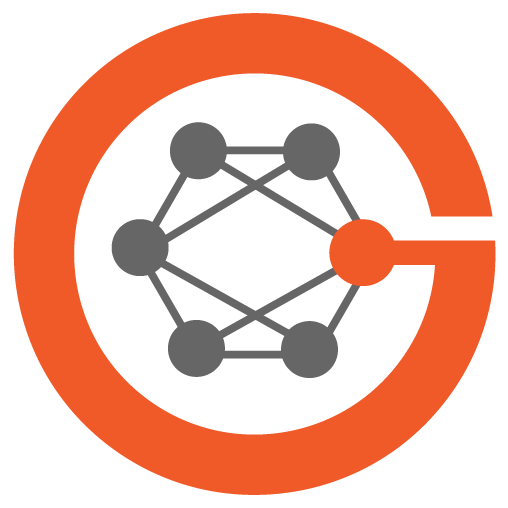In July, I reviewed Peter’s Outlive book here in Ground Truths and hoped I’d be able to interview him about my concerns. Here’s that conversation, recorded October 16th. I hope you’ll find it informative and stimulating!
The AI generated transcript (unedited) below with links to the audio recording
Eric Topol (00:01):
Peter, it's really great to see you. I haven't been chance to visit since early 2020, and you introduced me to Topo Chico as a great way to get carbonated water. Are you still into those?
Peter Attia (00:15):
Very much so, yeah. Although I have a different drink today because, well, I don't know why I grabbed for different drinks.
Eric Topol (00:22):
Yeah, well it's kind of amazing. Distinct from the rest of the waters, fizzy waters. At any rate, since that time, that memorable visit we had, you published an incredible book Outlive, and I think it sold more than a million, well over a million copies, which is amazing. So congratulations.
Peter Attia (00:41):
Thank you so much.
Eric Topol (00:42):
It's a great book. And you may have written my review, which I really thought it offers just a great information resource and it must've taken so many years to put it all together.
Peter Attia (00:54):
Yeah, I think it probably took seven years in total.
Eric Topol (00:57):
Well, I think it was well worth, and I think it's helping a lot of people. And in fact, I first became aware of it just because these patients were coming into me and saying, well, that's not what Dr. Attia says, or What do you think of Dr. Attia’s book ? So that's prompted me to give it a really close read, and I learned a lot from all your work. I thought what we'd start off with, I think you framed it really well with this Medicine, 1.0, 2.0, 3.0 and the shift to the right. So maybe you could explain the concept on that. Sure.
Peter Attia (01:34):
So Medicine 1.0 is kind of a placeholder for a time before there really was medicine, or at least before, there was sort of a scientific method and an understanding of science and the natural world around us. But of course, from a timescale perspective, it's what dominated all of our civilization. So humans have been around for 250,000 years and until very, very, very recently on that timescale, we didn't really have the tools intellectually to understand science. So we couldn't understand cause and effect. We didn't have a scientific method, let alone capacity to do experiments. And so most of what we did as far as medicine was based on things that we look back at today and think are completely ridiculous. Illness was brought on by the gods or bad humors or things like that. And really then when we start to think about medicine in the way we think about it today, we're really thinking about Medicine 2.0.
(02:33):
And this is something that was obviously a many, many year transition. Technically I would argue it took place over hundreds of years, beginning with Francis Bacon in the late 17th century or the mid 17th century, but really accelerating in the latter part of the 19th century with germ theory. So we can think about lister, I wrote a little bit about them, and ultimately really a more concrete set of tools including physical tools such as the light microscope, ssid, Muer G writes very elegantly about the importance of the light microscope in the understanding of the cell. And of course a big part of understanding the cell was understanding bacteria, their role in disease. And then we have the advent of antimicrobial agents. So it's this sort of collective set of tools that allow us to basically double without exaggeration human lifespan in a matter of three generations.
(03:31):
So this is kind of a remarkable trajectory. I think it would be surprising for most people to learn, however, that in this doubling of human lifespan about, well, I would say virtually all of it has come through the reduction of and or elimination of infectious diseases and communicable diseases. And none of that has really come, or very little of that has come by addressing chronic diseases. And so as we've now lived longer by not dying due to the sort of usual infant mortality and infectious disease route, we're instead dying of these chronic diseases. And I think Medicine 2.0 has been largely unsuccessful in that arena with perhaps one exception and that exception is vaccination. So vaccination is in some ways a medicine 3.0 tool because it's a tool of prevention, meaning you treat before a person is sick, whereas most of the success of medicine 2.0 is treat once the patient is ill.
(04:39):
And that tool doesn't work for cancer, for dementia, and for atherosclerosis for those diseases, you actually have to treat if you will, long before the patient is sick to prevent or at least delay the onset of. So in some ways that is one of the most important pillars of Medicine 3.0, there are several others. So another very important pillar of it is an equal if not greater focus on health span over lifespan where the description and definition of health span are much more rigorous. So the Medicine 2.0 definition of health span is the period of time in which you are free of disability and disease. I kind of reject that definition is not very helpful because I'm as free of disability and disease today at 50 as I was when I was 20, I'm clearly not in as good a shape, I'm not as strong, I'm not as cardio respiratory fit, I'm not as cognitively sharp. So my health span has already declined. But by focusing on metrics of health span in a very detailed way, we're going to get a lot of lifespan benefits for free. And then there's the component of personalizing medicine. So again, it's a term that is rather glib, but it is kind of true. And so we think of evidence-based medicine as the foundation of medicine 2.0, and I think that evidence-informed medicine needs to be the pinnacle or the pillar of medicine 3.0 for reasons I'm sure we'll discuss.
Eric Topol (06:10):
Yeah. So I buy into the medicine 3.0 concept because we've never fulfilled the fantasy or dream of prevention really as you get to. And the four horsemen that you laid out so well, cancer, neurodegenerative disease, cardiovascular and metabolic dysfunction, all play into that, that we could actually prevent these. One of the questions on that was you shifted to the right better health span, but do you then fall off the cliff that is you have this great health span and you don't have the chronic disease, or do you wind up just basically delaying the chronicity? What are your thoughts about that?
Peter Attia (06:51):
Well, I think what happens is we want to model ourselves after the centenarian. So centenarians on average are living two decades if not a little bit more than the average person, so slightly more than two decades beyond the average person. And interestingly, they kind of die of the same diseases as the rest of us do. They just have a much more compressed period of morbidity, and they have this phase shift in time for the first brush with disease X. So they're going to die pretty quickly of cancer when cancer sets in, they just get cancer 20 years later. On average, their first brush with cardiovascular disease is also 20 to 25 years later. So if you think about cardiovascular disease in non centenarians, 50% of men, as you probably know, and maybe the audience doesn't, but 50% of men who are going to have a major adverse cardiac event will have it before the age of 65 and 33% of women who will have a major adverse cardiac event in their life will have, so before the age of 65 when we're talking about centenarians, they're into their eighties and nineties when they're having their first major adverse cardiac event.
(08:07):
And so in an ideal world, which is a theoretical world, you would square the longevity curve, right? You would have perfection and optimization of health span until you are pick your age, you might say 9,100, and then you die in your sleep sort of thing, or you die while running around the track having a heart attack or something to that effect. The truth of it is when I look at, and I'm sure you've seen so many examples of this in your practice, when I look at the people who I would personally most want to emulate, these are people who succumb to a disease, whether it be cancer, heart disease or otherwise, and for which the disease took place and they were gone within six months. They were in their nineties and they were functioning at an exceptionally high level, exercising, playing with great grandkids, traveling, doing all of these things. And then they were diagnosed with pancreatic cancer. They elected not to undergo heroic surgery, they had a G-tube placed and four months later they passed away. And I think we look at that and we say, boy, that's a much better outcome than spending 15 years in a gradual state of decline from the age of 65 to 80, which is the more common finding.
Eric Topol (09:24):
Yeah. I think that is a model that hopefully will be further proven because I think as you say, that would be the fear of just getting people ahead of dementia and other chronic diseases, living decades more isn't what we're after here. And I think we're totally concordant on that.
Peter Attia (09:44):
And there's no evidence that it can be done truthfully. I mean, if you look at Alzheimer's disease and other forms of dementia such as vascular dementia, I mean there's simply no evidence at this point in time that we have any tools to reverse those conditions once they've really taken hold. And I think that largely explains why the pharmacologic industry has failed. I mean, I'm not being histrionic when I say that. I mean it. It's been an abject failure to suggest anything otherwise. And again, that suggests that if we're going to do anything about the rising incidences of dementia, it's got to be at identifying the highest risk patients and taking the most significant preventive steps with respect to their metabolic health, exercise, sleep, even aspects of stress management and mental and emotional health. I mean, all of these things factor in, but the time to act on them is long before mild cognitive impairment or M C I sets in.
Eric Topol (10:45):
Absolutely. One of the things that you hit on so eloquently overall, the whole book is really an aite approach, but the insulin resistance as a critical condition, which is thematic as to getting early to these. And by the way, all four of these major areas are the common threads get to that. And so you have used continuous glucose monitoring. I don't know if you still do and you have centered on this and you're aware that in the medical community there's like a pre-diabetes is a myth, shouldn't be recognized. It's scare mongering. I mean, which is crazy. Can you sort out this because it does seem like insulin resistance and we're going to get into the Glip one drugs is a big deal that's being largely ignored.
Peter Attia (11:43):
Yeah, it's very interesting. I'm not sure where that's coming from because I actually think the data are quite unambiguous that even beyond or outside of the threshold of type two diabetes, which is currently defined by the hemoglobin A1C historically about 15 years ago and prior, it was defined by the oral glucose tolerance test, but let's just use the modern day definition. So a line was drawn in the sand that said if your hemoglobin A one C is 6.5% or higher, which for most people, but clearly not all people corresponds to an average blood glucose of 140 milligrams per deciliter or higher, you now have this condition called type two diabetes. And presumably anybody with an IQ above about 60 recognizes that indeed your risk of cardiovascular disease, cancer, Alzheimer's disease in addition to your risk of kidney disease and a whole bunch of other things goes up dramatically as a response to that.
(12:41):
In fact, your all cause mortality is up 40% when you have type two diabetes. Okay, let's put all that aside and assume anybody with half a brain agrees with that. Where I'm not sure I understand any disagreement is if you look at the data for what is the all cause mortality of people with hemoglobin A one C below 6.5, it points to a monotonic decrease in risk as you go down from 6.5 to five. In other words, having an average blood glucose of 100 milligrams per deciliter is better than having an average blood glucose of 110, which is better than 120, which is better than 130. And this is according to all cause mortality data. It's also true that we have better outcomes for people who have, and this is harder to demonstrate, but I think if you look at the type one diabetes data, you see that you have better outcomes with fewer spikes in glucose.
(13:45):
So in other words, it's not just the average of blood glucose, but it's managing the shape of the glycemic curve. So where I've seen people push back is they will acknowledge if confronted with those data, they'll acknowledge it, but they'll say that, Hey, those data are based on hemoglobin A one C and not C G M, to which I'll say, yeah, that's true. Those data were not captured with C G M. But to me it's a relatively minor leap to say if we know these things based on hemoglobin A one C to be true, it's very likely that they're going to be true based on capturing more accurate data with the continuous glucose monitor. So Eric, I'm not really sure what the hesitation is. If the hesitation is that we don't want payers to cover the cost of C G M for non-diabetics, frankly that's a policy question. I won't wait until that, right? I mean, again, my patients, most of them spend at least 30 days with a C G M non-diabetic patients and they pay out of pocket. So really it's not costing the system anything. And it's really not that expensive relative to the cost of missing out on that information. And for many patients, it becomes a tool that they'll use for more than 30 days
Eric Topol (15:00):
And they learn certain foods to avoid because of significant spikes and other things like
Peter Attia (15:05):
That. It's not just the food, although that's the most obvious thing that one learns. But I think what most people find more interesting, and certainly I did and I started wearing A C G M in 2015, what most people learn is the effective sleep, the effective exercise, and the effective stress and how much those things change glucose control. So I was just talking with a patient last week and they were saying, and it's sort of funny because they're telling me this, and of course I already know the answer, but I love hearing them come to this conclusion rather than me telling them. And the patient was saying, wait, what a difference it's making. If I have a bad night of sleep versus a good night of sleep with a really good night of sleep, I can get away with eating X, Y, and Z, and my glucose numbers are well within the parameters we've set for optimal. And if I sleep two hours less, I get home too late, I wake up, something goes wrong, all of that goes out the window.
Eric Topol (16:07):
Peter Attia (16:07):
My Glucose is high overnight, I wake up with high glucose and my glucose tolerance is minimized. And I know for me personally, that was a huge insight that leads me to be very thoughtful about food choices with and without all of the other variables in my life in order.
Eric Topol (16:23):
Yeah, I think that's actually a project we're working on right now, the multimodal AI interactions between stress, sleep foods and all these things that change glucose spikes. And some people, of course, as you know, they don't spike to anything. And then of course many others, perhaps some majority have some or even very significant spikes. Now, one of the other things I learned, which is not the accepted recommendation, is about protein. You wrote about how one gram of protein per body weight or 130 grams or more. That's one thing I just want to commend you about there is that the medical community doesn't pay enough attention to nutrition. You obviously have zoomed in on this quite a bit, but tell us a little bit more about the protein story. Well,
Peter Attia (17:18):
I mean I think unfortunately the R D A, the recommended dietary allowance is sort of addressing the wrong question, right? It's a relevant question, it's just not a relevant question today. It was a relevant question in an era of food scarcity, right? So when we think back to the 1940s and the 1950s or during the war when food was not as abundant as it is today, and one was really thinking, what is the minimum effective dose? What's the minimum amount of protein I would need to survive? Yeah, then I think you're closer to that one gram per kilogram of body weight. But if you look at the data more carefully and you ask the question, okay, imagine we're coming from a world that's not resource constrained, which it clearly isn't today. We have unlimited access to energy. It's never been cheaper by energy, I mean food, then the question is, well, what's the optimal amount?
(18:19):
And you see that the answer is somewhere between 1.4 and two grams per kilo of body weight. So it's potentially twice as much as we've historically told people. And that you might say, well, Peter, that's a really big range, 1.4 to two. How do you anchor in on where it needs to be? And again, I think this is where medicine 3.0 can lend a hand, right? And it depends on a lot of things. It depends on your activity level, it depends on how much you're breaking down muscle on a daily basis, how active you are also depends on how old you are. So the older you get, the more anabolic resistance you have, meaning the more difficult it is to assimilate amino acids in muscle protein synthesis and therefore the more of them you need. It also depends on the quality of those amino acids.
(19:07):
So if a person is eating a vegetarian diet and they have to get all of their amino acids from plants, they're going to have a harder time reaching the thresholds for leucine, lysine, methionine, which would be some of the most important amino acids, and they're probably going to have to eat more total protein to hit their numbers. So all of these things factor in, and I would say the final thing that we look at is the overall balance of energy in the patient. So you heard me talk about, you probably read that I distinguished between people who are overn, nourished, undernourished, adequately muscled and under muscled. And that creates kind of a two by two that allows you to think about what do we need to do with energy restriction? And if a person is adequately muscled and undernourished, which by the way is a reasonable subset of the population, then you can be a little bit more forgiving on allowing yourself to be at the lower end of that protein intake because the goal is first and foremost to reduce total energy intake. Conversely, if a person is underused and maybe even adequately nourished, you're going to push them to higher levels of protein intake. So it's clearly an art more than it is a science, but the science is the piece that says muscle mass matters tremendously. Frailty is an enormous contributor not just to mortality, but much more importantly to morbidity in an aging population. And therefore everything must be done to minimize frailty and sarcopenia.
Eric Topol (20:37):
Well, you convinced me that was compelling in the book and I hope my protein intake on the basis of your work there. The other thing, of course, before I get into some questions on the grounds is about you exercise, you're an exercise fanatic. I don't know, are you still exercising three or four hours a day?
Peter Attia (21:00):
No, I probably average two hours a day.
Eric Topol (21:02):
That's pretty good. Okay. A little more than the average, I guess though, right?
Peter Attia (21:07):
Probably yes.
Eric Topol (21:08):
But it's great that you can do it and that you're committed to it. Now, one of the drugs that is out there as to potentially improving longevity, which has an every animal species tested is rapamycin, which you've acknowledged of course could be trouble because of immune suppression, but it's a candidate drug even we're trying to look at it potentially for long, covid has a lot of good for mitochondrial function as well as potentially for people with activated immune systems. But what do you think about, I guess you take rapamycin and advocate for patients? I do. Yeah.
Peter Attia (21:50):
I mean, probably 5% of our patients take it. So I wouldn't say that we certainly don't use it in the way we would use, say, lipid lowering drugs where we have a very strong position that's much more clear. But look, rapamycin is a drug I've been studying for probably 10 years now, maybe a little over 10 years actually. And look, I think it's, as you said, it's the most successful molecule that's ever been tested from a Jira protective perspective in the field of science and medicine. So there is no other molecule that has so repeatedly demonstrated a survival advantage across all species. And these are, again, it's important to understand this is all species that span a billion years of evolution. So if you go back and look at the effective mTOR inhibition on yeast, on worms, on flies, and of course more recently on all types of mammals and also important models of mammals. So not just like the B six mouse, but some of the more representative mouse models, of course, Matt Kalin is now testing this in companion dogs. We've got some small primate studies. All of these things are basically showing the exact same effect.
(23:14):
Couple that with the fact that we have human data using rapa logs, dosed intermittently. So this is a very different dosing schedule than what is used for the immunosuppressive doses, for example, in transplant patients. And we see the opposite now. We see immune enhancement. And that's why in the book I make a point of saying we've historically thought of rapamycin as an immune inhibitor. We're probably better off thinking of it as an immune modulator. So it can be an inhibitor, but it can be an enhancer. And probably one of the most interesting near-term applications for rapamycin might be indeed B-cell enhancement in elderly patients, which is the population. It's already been studied in The 2014 paper with Q Stein led by Joan Manic, demonstrated that just a six or eight week course of intermittent rapamycin followed by a washout was enough to boost immune response to a flu vaccine. So these are very interesting studies, and of course it's unfortunate we're never going to get a hard outcome study of rapamycin in humans because it would take too long and it's never going to be
Peter Attia (24:27):
Done. So I think the best we're going to get are better and better animal models that more closely approximate humans, for example, in the probably companion dogs would be as good as it's going to get there. The readout of that study will be 2026. And then the best thing we'll expect to see in humans are biomarker studies. Now, the promise today, we don't have really good biomarkers. Rich Miller at the University of Michigan has done some incredible work here identifying a subset of biomarkers from the I T P mice. I would love to see that work replicated in humans and first begin with, Hey, are we even able to measure these well in humans and are we able to perturb them predictably without too much biologic noise? And if we can do those things, then it starts to get very interesting. But Eric, that's my belief as to how we will bridge the gap between where we are now, which is clearly rapamycin works for every creature to where what would be very interesting to know is does it therefore work in humans?
Eric Topol (25:28):
That's
Peter Attia (25:28):
Not a guarantee.
Eric Topol (25:29):
Yeah, interesting how that plays out because it has real potential. And also, of course, as you well know, it's about a dose story too. It's low doses versus higher doses. And your point about immunomodulation is really important. The next thing I want to ask you about was the total body M R I. As you know, that's become, there's many more startup companies are advocating these and that you could get total body MRIs to prevent. That's something I know you're supportive of, but also obviously there's concerns about rabbit hole incidental findings. What are your thoughts about that?
Peter Attia (26:09):
Yeah, I mean, I'll take a step back from minute and talk more broadly just about cancer screening because of course, whole body M R I is simply one tool one would use for cancer screening. And this is an area where I've had a real pendulum swing in the last six or seven years. So I think in my training, I trained in surgery, and so going back 15, 20 years, my view was that cancer, aggressive cancer screening was really only giving us lead time bias. And I really wasn't convinced that it was saving lives. But the truth of it is, I didn't really look closely enough at the data. And I think if you look at the data more closely, what you'll realize is that it really does matter how many cancer cells you have in the body when you treat a patient.
(26:57):
And I think that the burden of disease matters. And I really think that that was the big change in my perspective and the best evidence for this, and I cite two examples in the book, which I think are two of the largest examples, is when you contrast the effect of treating patients with metastatic cancer versus treating patients in the adjuvant setting for the same cancer with the same drug. So just for the listeners to make sense of that, adjuvant therapy is what you give a patient after you've surgically removed the existing tumor and you give it because there are still cells in the body. So when a patient has a colorectal cancer and the surgeon removes the piece of the colon with the cancer and the piece of the lymph nodes that are attached to it, and there's cancer there, but the CT scan demonstrates that at least grossly to the eye, there's no other cancer. So the liver, the lungs, the bones, everything is clean. What do you do with that patient? Well, you know that if you don't treat that patient, 60, 70, 80% of those patients cancer will come back.
(28:12):
But we know that if you give those patients the FOLFOX regimen and comparable regimens with comparable drugs, at least half of them will be cured. So that's pretty interesting. Now what happens in the case where you go and you take the colon out and now the patient has metastatic disease all over their body? Well, it turns out you're going to give them the exact same chemotherapy, but how many of those patients will survive? Zero. Zero of those patients will survive tragically, every one of those patients will die from their disease today. And so what that tells us, and by the way, we could do the same exercise with breast cancer. So you can take the most common cancers, and it's always the same situation even when you're using the same drugs. We have far better success treating adjuvant in the adjuvant setting than we do in the metastatic setting.
(29:06):
And I've discussed this with many oncologists, and they all sort of point back to the same argument, which is the more cancer cells you have, the higher the probability that some of those cells are going to find escape mechanisms to the drugs, they're simply going to be able to mutate their way out of the drug. And therefore, when you're treating a billion cells, which is maybe what you're treating in the adjuvant setting, you have a better chance at squashing the cancer than when you're treating tens of billions or hundreds of billions of cells in the metastatic setting. So with all of that said, if the important tool to not succumbing to cancer is reducing the probability of getting cancer, which it clearly is, and we could talk about what are the important steps there beyond the obvious, not smoking. I would say the second most important thing is if you do get cancer, and unfortunately I still believe that you can do everything and still get cancer, there's so much we just don't understand about this disease in a way that we understand so much more about cardiovascular disease.
(30:12):
But when it comes to cancer, I think Bert Vogelstein was absolutely correct when he said, bad luck just plays an enormous role. And of course, I'm paraphrasing, but that's a very controversial paper he wrote many years ago that I believe is correct. So we have to be able to find it early. Okay, so with all that said, what are the tools we have to detect cancer early? Let's put aside all of them and just talk about the M R I because we can talk about colonoscopy, we can talk about liquid biopsies, which you might want to talk about. But when it comes to the M R I, why has it taken hold as a pan screen of choice? I think there's a couple of reasons, but the most important is it's not invasive and it has no radiation, so there's no physical harm from the test, and that's not true for a lot of other screens, right? A CT scan comes with an enormous amount of radiation. If you're going to do whole body, a whole body CT scan is probably even today, 25 to 30 milli verts, which would be an unacceptable amount of radiation for screening.
(31:13):
And of course, there are certain types of screening that are very important, but they come with risk like colonoscopy and M r I wouldn't displace that, but we take a slightly more measured approach to it, whereas anybody can go and get this M R I if they're willing to pay. I don't know what the going rate is today. It's one to $2,000 probably for a whole body M R I and obviously that's out of pocket. So let's get to your question now, which is what are the advantages of doing this? What are the blind spots of doing this and what are the down spots? Well, I'll tell you, this is what I say to every one of my patients. Every one of my patients, here's a 10 minute soliloquy that I give on sensitivity, specificity, positive predictive value, negative predictive value, and pretest probability. In fact, I've made a video out of it that I usually have them watch first and then we talk about it so that they really, really get it.
(32:01):
But what I want everybody to understand is every screening test has an intrinsic sensitivity and specificity, and then your pretest probability is what determines the positive and predictive value. And I say, here's the deal with M R I. It's a very, very high sensitivity test. One of the highest sensitivity tests we have, meaning if you have one of the cancers, it's capable of detecting, so not luminal cancer in an early stage, but if you have one of the cancers that's capable of detecting, it's very likely to detect it. Conversely, it has one of the lowest specificities of any test we can. What that means in English is it's very bad at distinguishing between cancer and non-cancer in terms it's going to cause us a lot of false positives. So then I show them, here is your pretest probability of having cancer, and we have a little model, and I plug in the sensitivity and the specificity. And by the way, we can improve the specificity greatly using diffusion weighted imaging with background subtraction. So I actually don't advocate for off the shelf M R I scanning because they don't use D W I with background subtraction, and therefore the specificity is very low.
Peter Attia (33:19):
We can really increase the specificity. It's still lower than you would like using diffusion weighted imaging with background subtraction. By the way, that's what makes, for example, multiparametric, M R I for the prostate, such a valuable tool. And then I say, look, the bottom line is that the positive predictive value of this test is still 10 to 20%. That means in English, if there is a positive finding, it is much more likely to not be cancer than to be cancer. And we are going to be on a little bit of a goose chase going after it. And where MRIs are especially weak, is in glandular tissue. This is their Achilles heel. And so is there a likelihood we're going to see a thyroid nodule that is totally irrelevant? Yes. And I say in our experience, I would say one in four patients who undergoes a whole body, M R I, maybe one in five ends up needing to do a follow-up study, like a thyroid ultrasound just to chase something down. Or at a minimum they need to do another scan a year later to follow something that is almost assuredly, nothing like an adrenal adenoma, but just to make sure it's not growing.
(34:34):
And based on that, Eric, about 10 to 20% of my patients just elect not to do it. They're like, that's not for me. And I say, great, know thyself. If it's for you, I want you to go in eyes wide open. And if it's not for you, I want you to know that you're not doing it and why you're not doing it. But I think that the reality of it is, and where you and I probably share a concern is I think it's very dangerous for patients to go into this without an advocate. And I think, so what I don't fancy is the idea of patients who just go into this without a physician who's there to be able to do with them, what we can do with our patients, which is help them make a very informed decision and just as importantly, walk them through the morass of follow-up should an INCIDENTALOMA show up.
Eric Topol (35:30):
Yeah, I think the way you prep the patients who go for it is so critical because I have so many patients I know you have who have had to go through all these extra tests, biopsies and whatnot, and came at everything negative, but the anxiety they went through was profound. So that's great. How have you positioned it and maybe in the future, the multi cancer early detection test is, whether it's through methylation or through fragmentation or whatever will be the first test, and then the M r I would be, where is it and what's going on? Because as you pointed out, apley, the number of cells and pre spread is so critical. And once it's already visible on a scan, it's a lot bigger than what you might be able to pick up through the cell-free plasma tumor, D n A. So one last thing I want to ask you about. You didn't write much on the Glip one drugs gyro, and we govi, and they're obviously, I don't know if I've ever seen a drug class like this, Peter, ever. And obviously right now it's not diabetes, it's obesity. But where do you think this is headed? Because as you probably saw, there were people even with early type one diabetes where it got rid of their insulin requirement, small series, but still very intriguing, thin people, right? Where do you see this headed?
Peter Attia (37:03):
Yeah, I don't think I wrote at all about this in the book truthfully, although I've written and done many podcasts on it since 2020, or probably since 21 was the first time I did a podcast on it. And so I've been following it very closely. And I think like any doctor, I'm constantly being inundated by patient requests to go on it. And it's mostly to manage weight. I mean, there's nobody that's coming to me saying, I'm not happy with my insulin resistance. Please put me on, I want to lose 10 pounds. Please put me on manjaro. By the way, I'm sure you've seen this, but there's now a triple receptor, right? So there's now GLP one, G I P, and then glucagon. And that phase two looked even more dramatic than the phase two and phase three of both tze peptide and semaglutide. It's almost become a Saturday night live skid at this point where at some point there'll be a quad receptor drug that will reduce your weight to zero.
(38:08):
You'll violate the relativity, you'll violate the principle of conservation of mass at some point. So I won't lie, I do have a couple of concerns, Eric. So we've had a number of patients on these drugs, and in all of our patients, we monitor overnight heart rate and H R V, we do it because it's so easy to do. Every one of our patients has some wearable, they're always wearing a whoop or a Fitbit or something like that. And without exception, every single patient who is on one of these drugs we have yet to see an exception, has an increase in their overnight heart rate of eight to 12 beats per minute.
Eric Topol (38:50):
I hadn't heard that. I hadn't seen it know about the GI side effects, but hadn't seen the cardiovascular.
Peter Attia (38:57):
And it goes away when you're off drug,
Peter Attia (39:00):
Takes a while. It takes a couple of weeks to go away depending on how long you've been on the drug, but your heart rate will return to normal off drug. And I haven't looked in a few months, but I haven't seen an explanation as for why that's the case. But it gives me pause because I can't think of a physiologic scenario that would increase your resting heart rate by 10 beats per minute as a positive thing. Now that doesn't mean it's not a good idea for some people. So in other words, there's clearly benefits to this drug in some populations. But I guess my reaction is if you're a person who just needs to lose 10 pounds, I'm not convinced that the risk is worth it relative to the reward.
Eric Topol (39:48):
Well, and to your point, there is not just the fact that you're getting this onward effect, at least we would deduce it's untoward, but that these people who are losing more than 10 pounds, losing 50 60, there's no way to get off these drugs that have been mapped out, whatever the effects are. And one I thought you would really zoom in on knowing at least what you've written about is the muscle mass, the fact that there's NIA and bone density loss from these drugs, and especially in people that are taking it long-term. Are you concerned about that?
Peter Attia (40:23):
We absolutely are. And we don't put patients on them without a DEXA scan, so that if for nothing else, we can demonstrate to them at some point when enough is enough, we're not seeing, and I'm not saying it's not possible, but I'm just saying you probably have to be much more deliberate about it. We're not seeing what I would consider an ideal loss of body weight either. So an ideal loss of body weight is generally regarded as less than 25% of the loss is lean mass, right? So if a person loses 50 pounds less than 12 and a half of those pounds should be lean mass, that would be really, really ideal. When we see people lose 40 pounds, i e 10, of which 10 or less should be lean, we'll easily see it be 50 50.
(41:15):
That's a very, very common finding. So that person paradoxically, is increasing their percent body fat as they're losing weight. Assuming they started out at 35 or 40% body fat, they're actually getting slightly higher in fat percent. So again, I still think that they're unbalanced. People are getting metabolically healthier when they do this in the short run, but I'd love to see better data. I don't know why I'm not jumping up and down with joy. I know that the rest of the world is so I don't know why I'm not trying to be contrarian about it, but I do have my reservations about their pan use.
Eric Topol (42:01):
I share those, especially since we don't have a way to get people off if people could and maintain their weight or that. I think because these side effects are notable and even perhaps more than is generally recognized as you're bringing up, the concern here is without a exit ramp, we got a lot of potential lurking trouble there. Well, this has been terrific to review a lot of the create work you did in the book. Some of my questions that I came to when I read it saying, what did you say about this or that? But overall, it's just a great resource for people. It's an inspiration for people to take better care of their health. Maybe they don't want to get into every bit of the things that you've written about, but you certainly covered the bases really well as well as anyone ever has. So it's great work. Peter, thanks so much for joining today.
Peter Attia (42:58):
Thanks very much for having me, Eric, and thanks for taking the time to read the book and comment on it.












Share this post